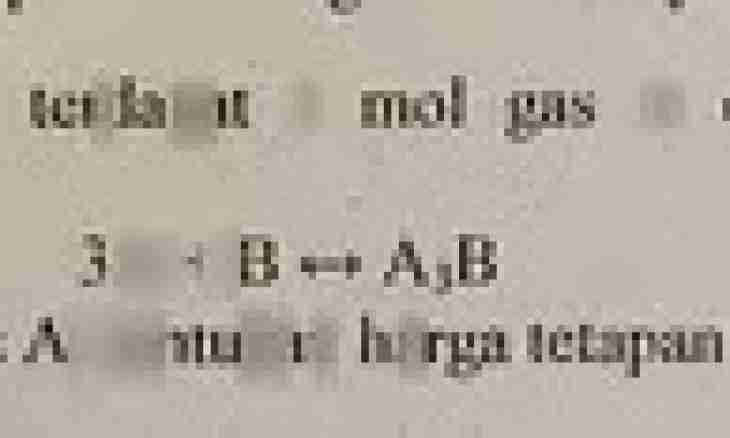The smallest particles of substance – atoms, molecules, ions, electrons participate in chemical processes. The number of such particles even in very small quantity of the studied sample is extremely big. To avoid mathematical calculations with huge numbers, special unit – mol was entered.
It is required to you
- - Mendeleyev's table.
Instruction
1. The mol is the amount of substance comprising a certain number of particles (atoms, ions, molecules) equal to constant Avogadro. Na = 6.02 X 10 in 23 degrees. Constant Avogadro is defined how the amount of atoms which is contained in twelve grams of carbon.
2. Proceeding from it, it is possible to calculate what number of moles contains in substance if you know amount of atoms or molecules in it. This value needs to be divided into Avogadro's number. For example, if in the studied sample is available 12.04 x 10 in 23 degrees of molecules, then number of moles will be 2. The number of mol as n is designated.
3. The molar mass of substance (M) is a weight which one mol of this substance has. It is possible to obtain these data, using Mendeleyev's table. For this purpose it is necessary to put the molar mass of each element, considering at the same time the available coefficients. For example, for CH4 methane the molar mass of M will be equal to 12 + 4 x 1 = 16. This size in gram, divided into mol is measured.
4. To calculate mol, it is necessary to know besides molar weight and the mass of the studied sample. Further calculations are conducted on formula n = by m/M where m is the mass of substance.
5. If you know concentration and volume of solution, it is possible to find quantity mole of a substance, proceeding from these data. For this purpose you need to multiply the volume and concentration. The formula looks as follows: n = with x V.
6. If you want to calculate number of moles who are contained in gas under normal conditions (pressure equal to 101,325 Pas, and temperature 273 J), you need to know only a volume of gas. The formula in this case looks so: n = V/Vm. Vm is a molar volume of ideal gas, a constant under normal conditions. The molar volume of 22.4 liters/mol is equal. Also often it is measured in the cubic decimeters divided into mol.

